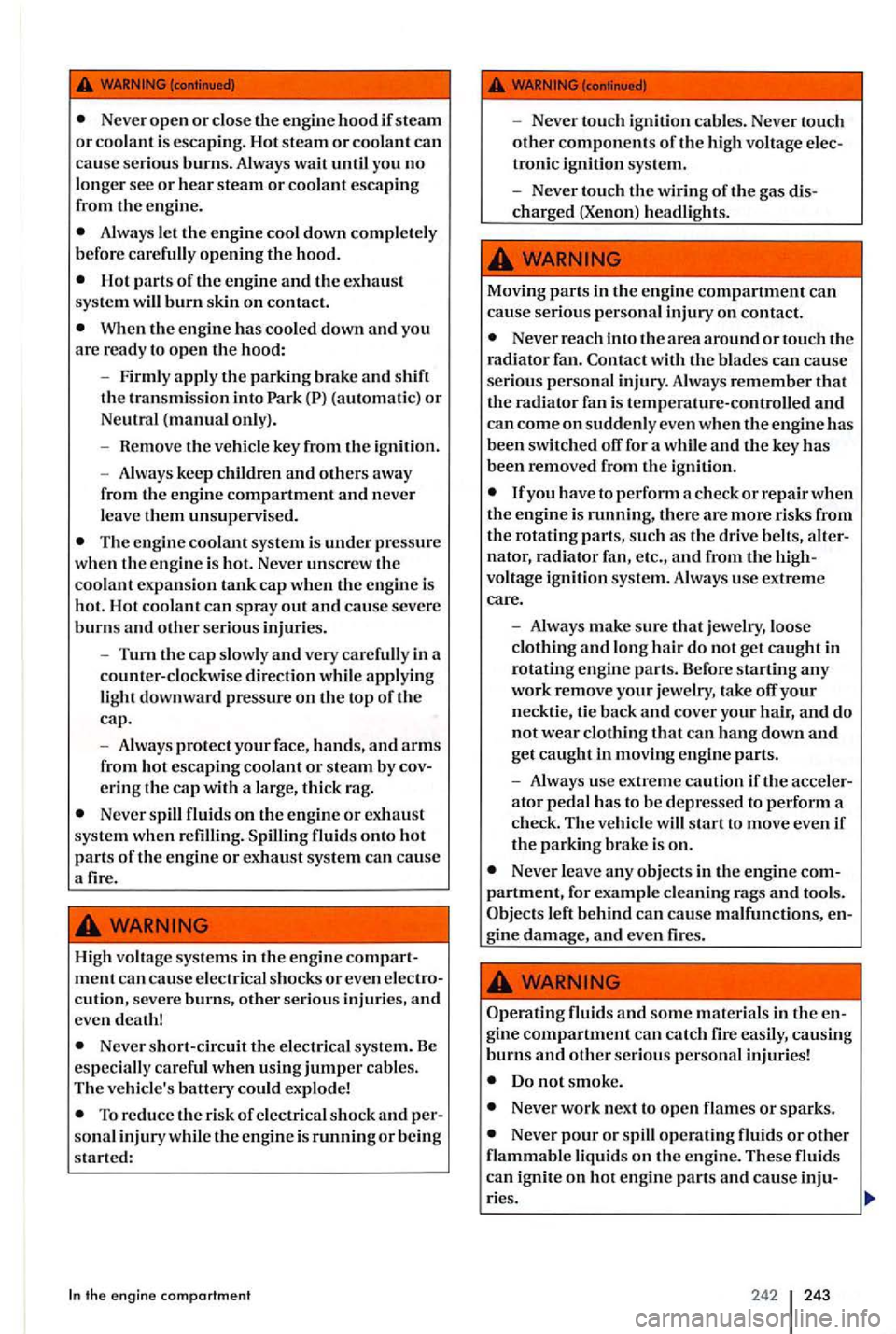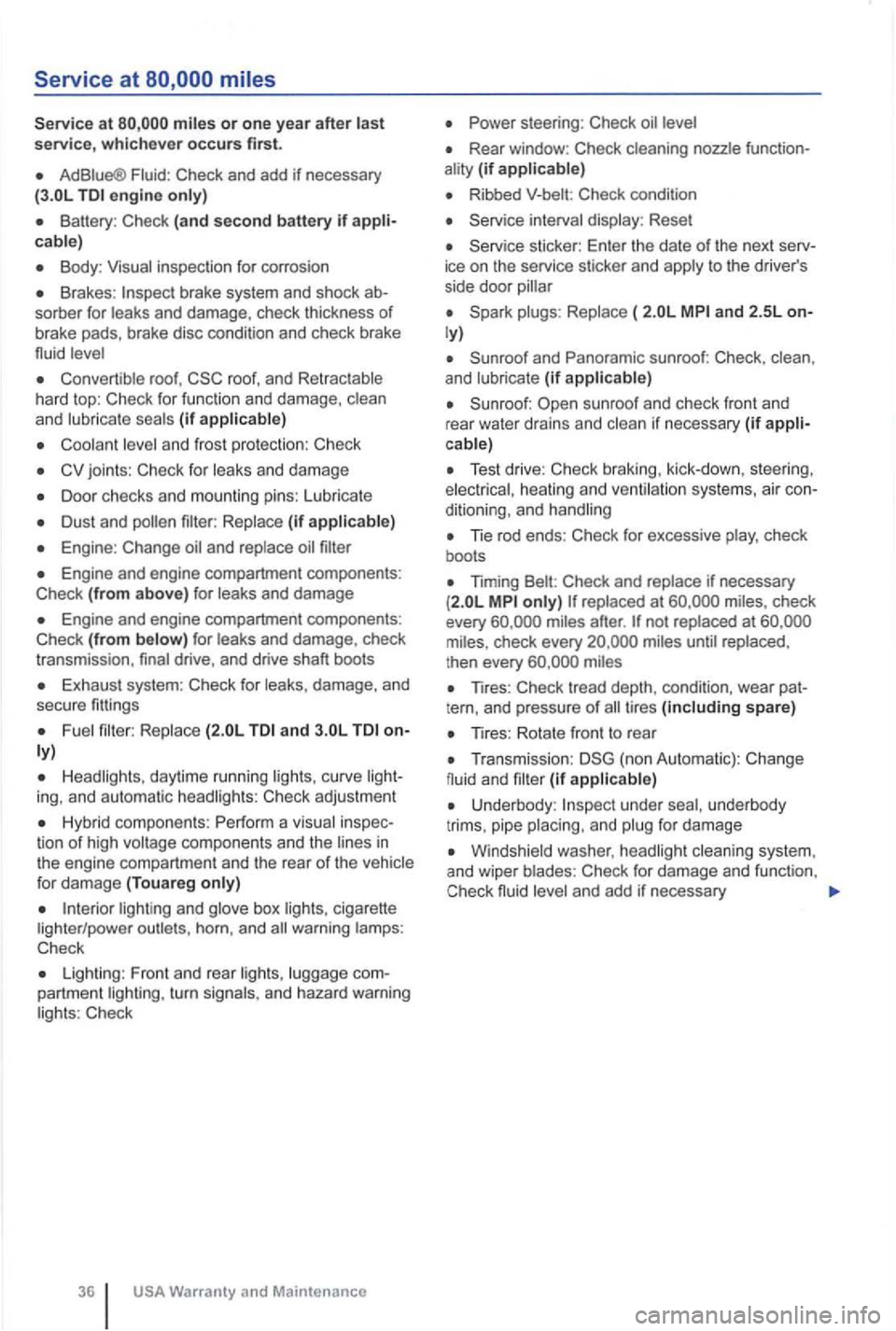2007 VOLKSWAGEN GOLF PLUS transmission fluid
[x] Cancel search: transmission fluidPage 189 of 541

Braking, stopping, and parking
Introduction
In this section yo u'll find inform ation on fo l
lowi ng:
Warning and indicator lights . . . . . . . . . . . . . . . . . 189
Park in g brake . . . . . . . . . . . . . . . . . . . . . . . . . . . .
.. . . . . . . . . . . . . . . 19 1
About t
he brakes . . . . . . . . .. . . . . . . . . . . . .. . . . 192
Bra king assistance sys tem s . . . . . . . . . . . . . . . . . . . . 194
Switching Anti-Slip Regulation (ASR) on ond off . . 196
Brake fluid . . . . . . . . . . . . . . . . . . . . . . . . . . . . . . . . . 196
T he brakin g support syste ms are Brake A ss is t E lec tro nic Differ e n tial Loc k (EDL). Anti-Slip
M ore information:
Trail er page
pag e
Tires and page 276
acce ssories, r epa ir s and modifi catio ns
brakes or worn brake pads can
ca use colli sio n and serious personal inju ry.
light s up in the
in strument cluste r di splay, w heth er a lo n e or to
ge ther with tex t message, immediat ely conta ct an authorized Volk swage n dea ler or authorized
Volkswag en Se rvi ce Faci lity to have th e brake pad s ch ecke d and , if necessary, re pl aced.
WARNING
improperly can cause se riou s pe rso nal
injury .
Never re m ove key from the ignition switch while vehicl e is m ov ing or ro llin g to a
s top. The steering w heel w ill lock and you not be
Never park the vehicle w here the ho t ex ha ust
syste m or catalyti c convert er could ignit e flam
mabl e mater ia ls, su ch as brus h , leaves , dry grass, spilled fue l, e tc .
Always apply th e parki ng brake whe n
p a rki ng your veh icle. Imprope r u sc of th e
p a rking bra ke can se rio usly injur e you and your passe nge rs.
Never use the
e m ergency . The stopping dista n ce is muc h
longer b ec au se onl y the wheels arc braked . use the foot brake to sto p the vehicle .
Never the throttl e from
th e e ng in e
th e automati c transmission is in gear. The ve hicle will start t o move as soon the e ngine speed ev en i f th e brake is on.
Never leave childr en or anyo ne w ho canno t
h elp them se lve s beh in d in the vehicl e. They could re leas e the brak e move the gear selector leve r or shift , wh ic h could cause th e vehicle to start m ov ing. Thi s ca n lea d
to a cras h and seri ous personal injuri es.
Always take the key with you when yo u
leave th e ve hicle . The engine ca n be started and ve hicl e sys te m s s uch as the power wind ows can
b e operate d , le ad ing to seri ous perso nal injury.
Neve r leave childr en , di sabled perso ns, or a nyon e who cannot h elp them se lves in the vehicl e. T he doors can b e lo cke d wit h the re mote contro l ke y, trapping passe nge rs in the
ve hicle in an emerge ncy. For exa mpl e, dep ending on th e tim e of year, people trappe d in the
ve hicle can be ex pose d to very high or very temperatures. Heat build -up in the passenger and parked vehicl e result in temperatu res in the ve hicl e th at arc much hi gher than the outsid e tempe mtu
res, partic ul arl y in summer. T emperatures ca n
qui ckly reac h le v e ls that can cause uncon
scio usn ess ch ildr en.
Page 240 of 541

Never open or close the engine hood if steam or coolant is escaping. Hot steam or coolant can cause serious burns. Always wait until you no longer sec or hear steam or coolant escaping
from the engine.
Hot parts of the engine and the exhaust
system will burn skin on contact.
When the engine has cooled down and you are ready to open the hood:
- Firmly
apply the parking brake and shift the transmission into Park
The engine coolant system is under pressure when the engine is hot. Never unscrew the coolant expansion tank cap when the engine is
hot. Hot coolant can spray out and cause severe burns and other serious injuries.
- Turn
the cap slow ly and very carefully in a
counter-clockwise direction while applying
light downward pressure on the top of the cap.
- A
lways protect your face, hands, and arms from hot escaping coolant or steam by
Never spill fluids on the engine or exhaust
system when Spilling fluids onto hot parts of the engine or exhaust system can cause a fire.
High voltage systems in the
engine com ment can cause electrical shocks or even
Never short-circuit the electrical system. Be especially careful when using jumper cables. The vehicle's battery could explode!
To reduce the risk of electrical shock and sonal injury while the engine is running or being started:
the engine compartment
- Never touch ignition cables. Never touch other components of the high voltage tronic ignition system.
- Never touch
the wiring of the gas
Never reach into t11e area around or touch the
radia tor fan. Contact with the blades can cause serious personal injury. Always remember that the radiator fan is temperature-controlled and can come on suddenly even when the engine has been switched for a while and the key has been removed from the ignition.
lfyou have to perform a check or repair when the engi ne is running, there are more risks from tl1e rotating parts, such as the drive belts, nator, radiator fan, etc ., and from voltage ignition system. Always use extreme care.
- Always make
sure that jewelry, loose clothing and long hair do not get caught in rotating engine parts. Before starting any work remove your je welry, take
parking brake is on.
Never leave any objects in the engine
left behind can cause malfunctions,
Do not smoke.
Never work next to open flames or sparks.
Never pour or spill operating fluids or other flammable liquids on the engine. These fluids can ignite on hot en g in e parts and cause ries .
242 243
Page 527 of 541

Service at
or one year after service, whichever occurs first.
AdBiue® Check and add if necessary
(3.0L engine
Body :
Brakes : sorber for and damage, check thickness of
brake pads, brake disc condition and check brake
fluid
o roof ,
and (if
and frost protection : Check
joints : Check for and damage
o Door checks and mounting pins: Lubricate
Dust and
Engine : Change
o Engine and engine compartment components:
Check (from above) for
Engine and engine compartment components:
Check (from and damage , check
transmission , drive, and drive shaft boots
Exhaust system : Check for
and
curve Check adjustment
Hybrid componen ts: Perfor m a inspec
tion of high in the engine compartment and the rear of the
box cigarette horn , and warning Check
o Lighting : Front and rear turn and hazard warning Check
o Rear window : Check function(if
Ribbed Che ck conditio n
o Reset
o sticker: Enter the date of the next to the driver's
side door
o ( and 2.5L
and Panoramic sunroof: Check, and (if
sunroof and check front and
rear water drains and if necessary (if
o Test drive : Check braking , kick-down, steering, heating and systems , air ditioning , and
o Tie rod ends : Check for excessive check
boot s
o Timing Check and check
every after . not at check every then every
o Tires : Check tread depth , condition, wear tern, and pressure of tires spare)
o Tires : Rotate front to rear
o Transmission : (non Automatic): Change and (if
underbody
t rims, pipe
system .
and wiper Check for damage and funct ion .
Check fluid and add if necessary